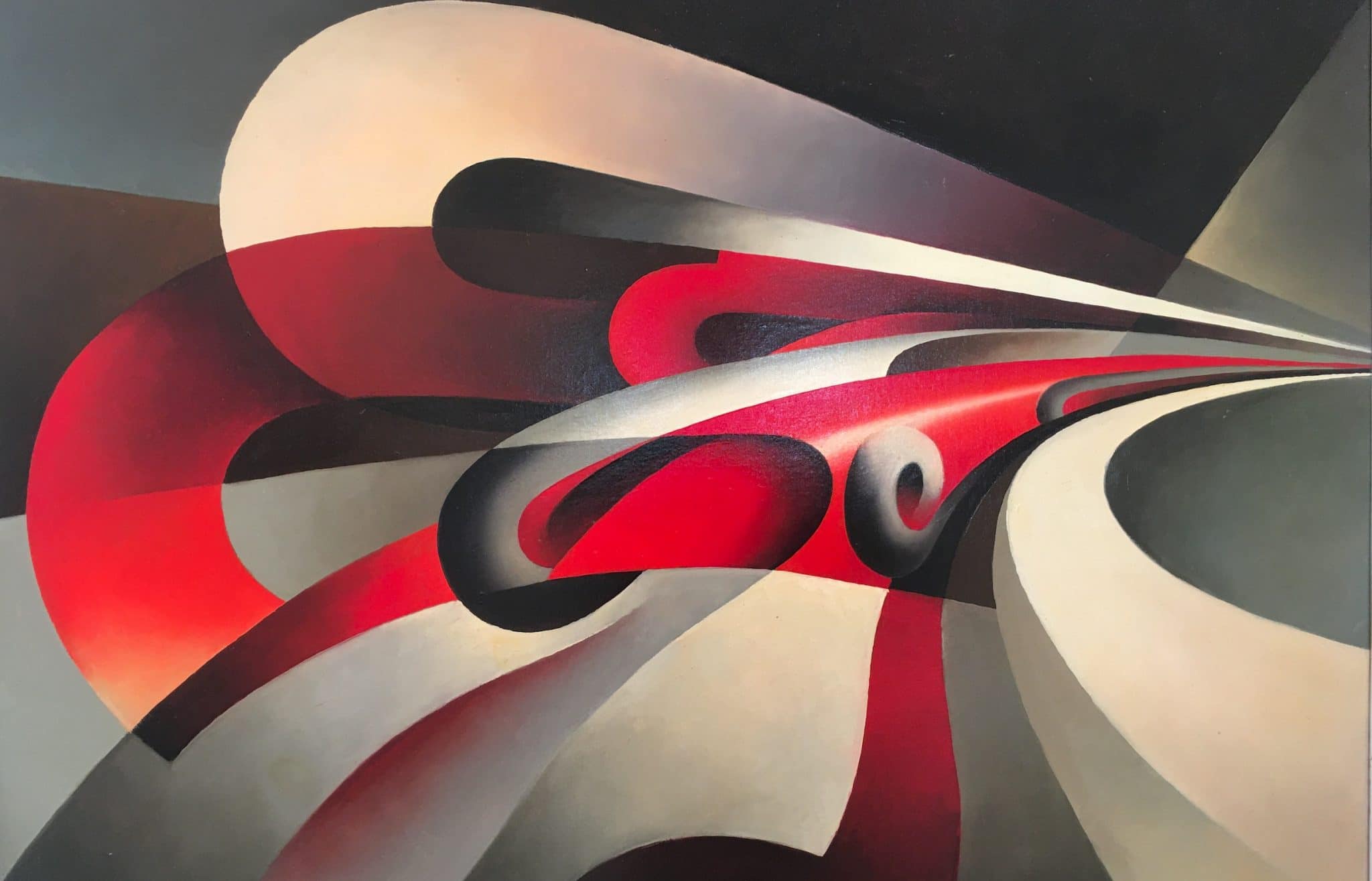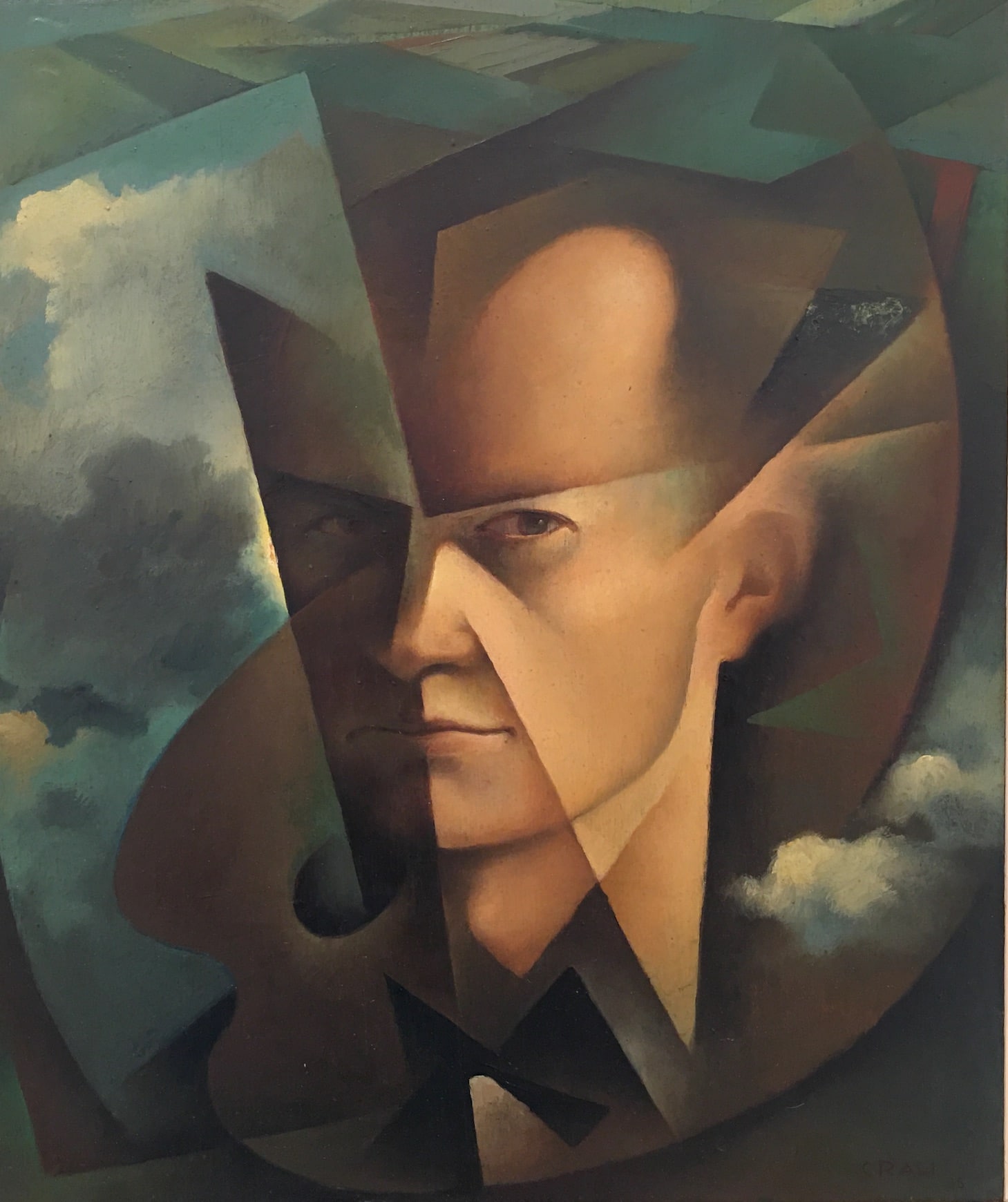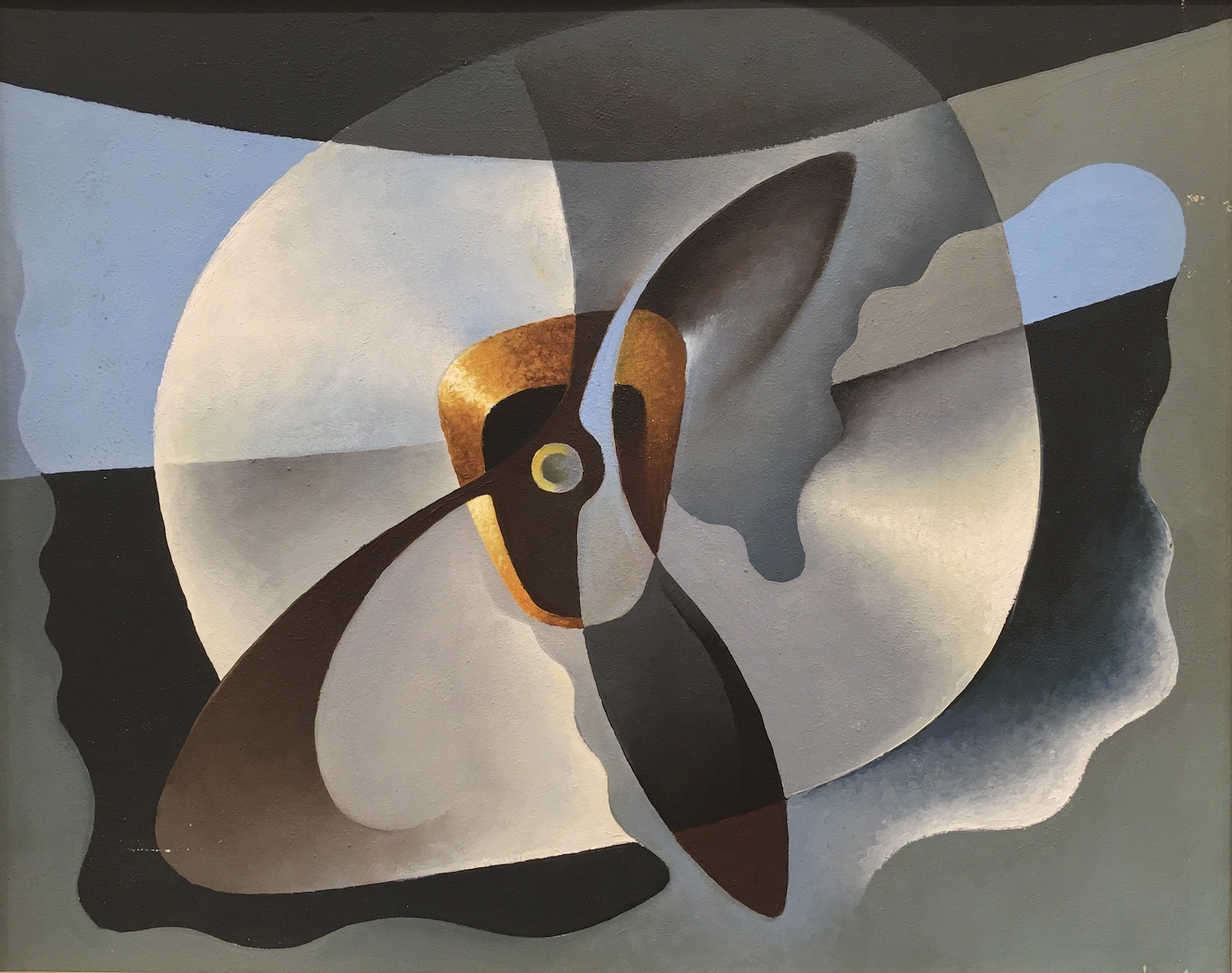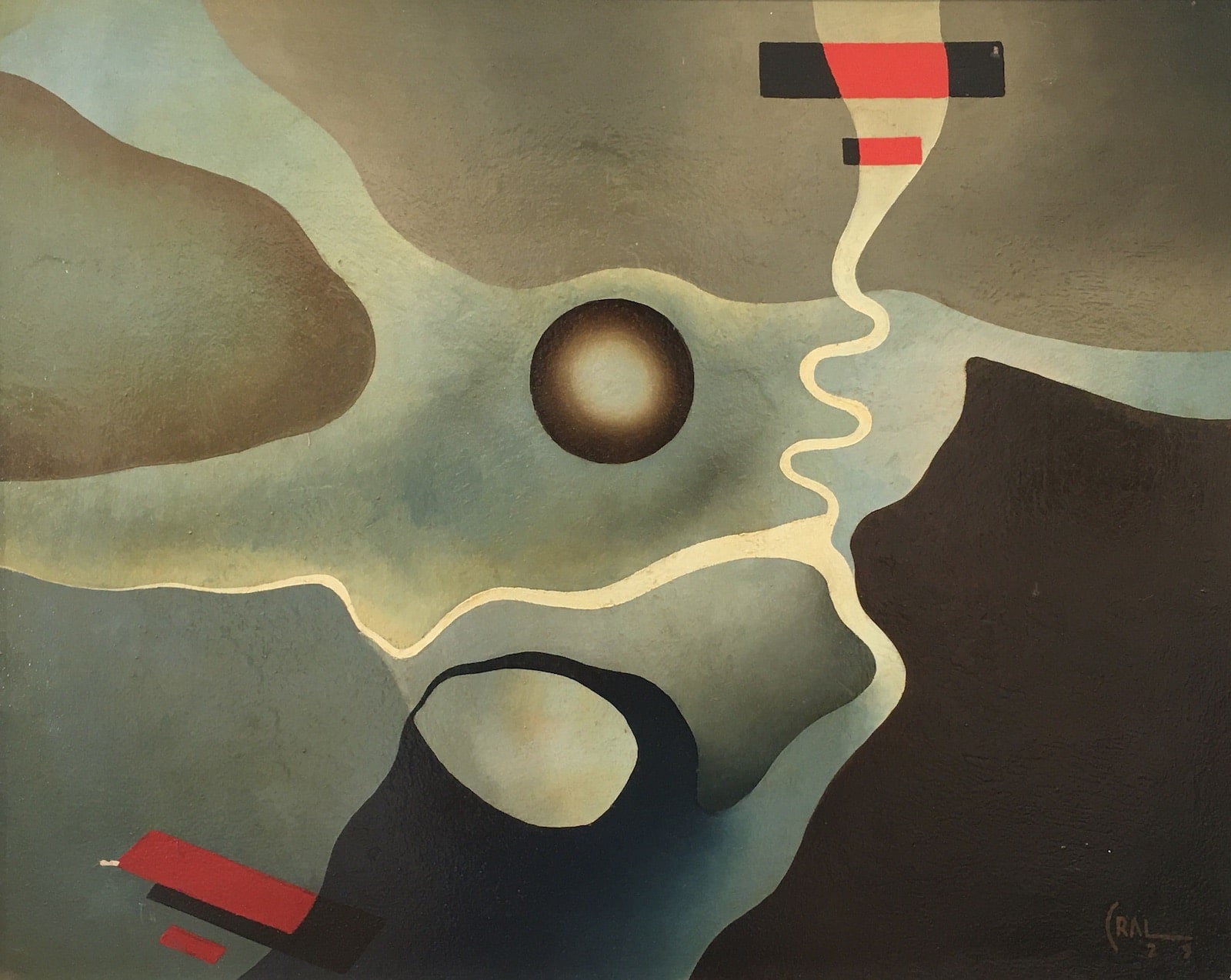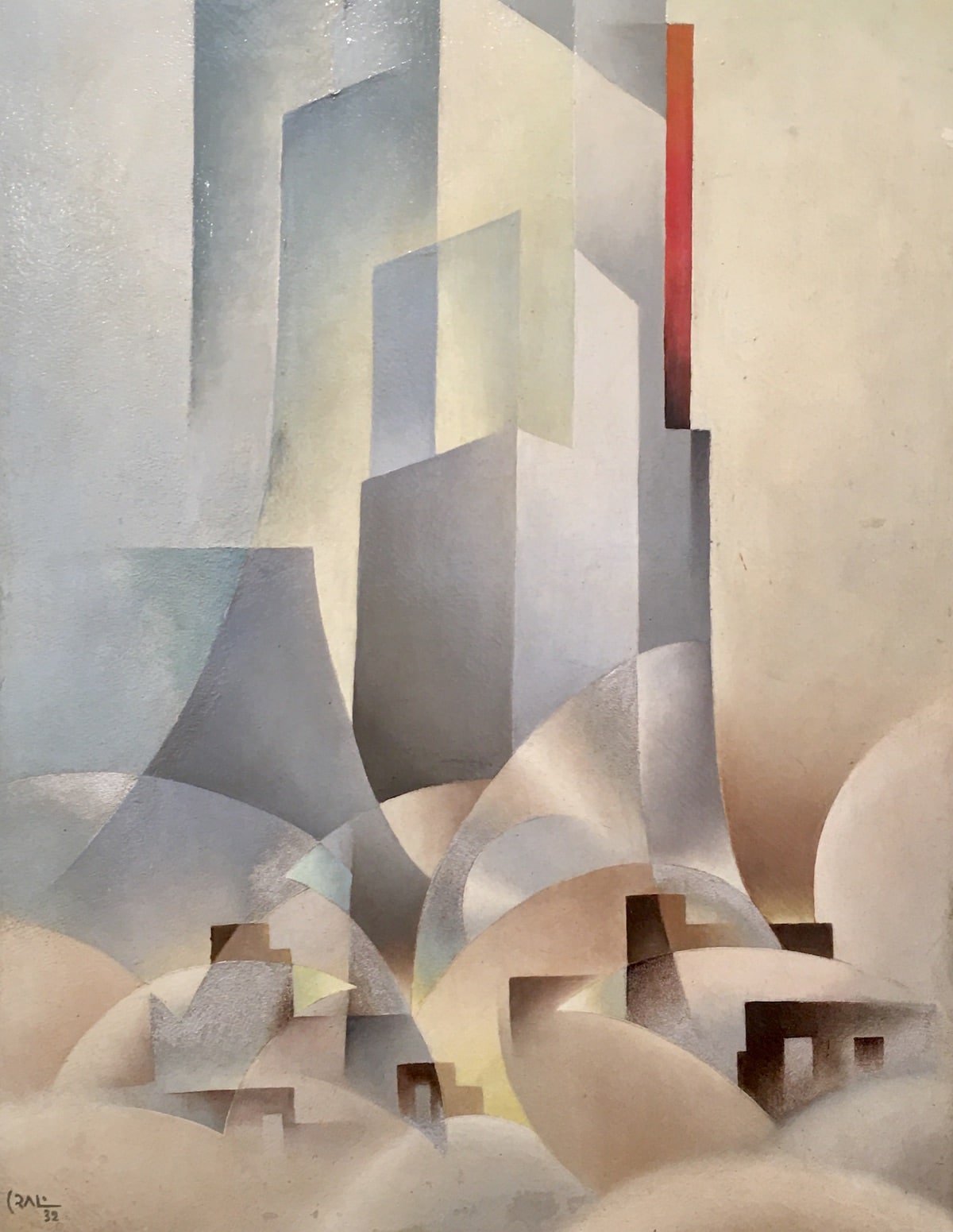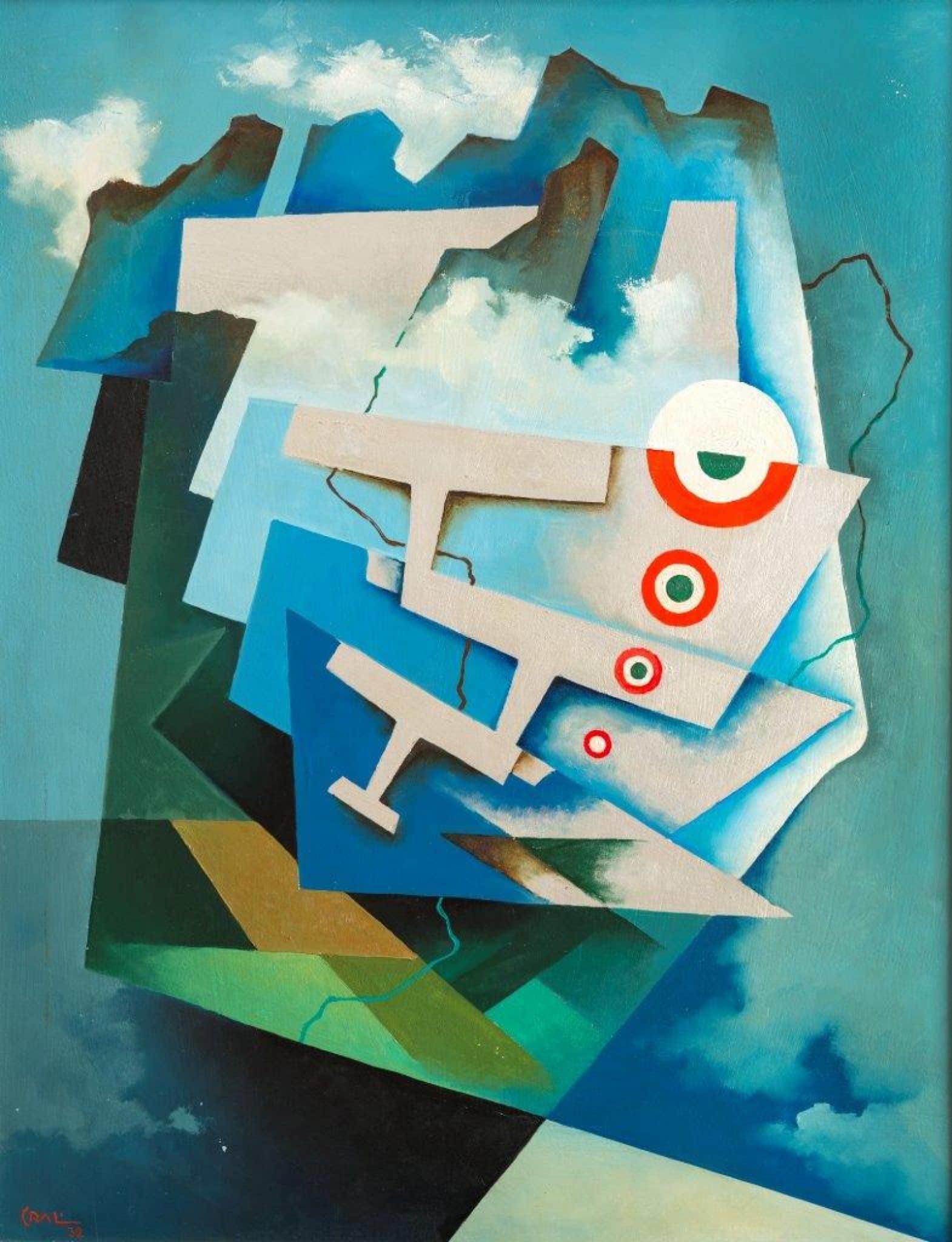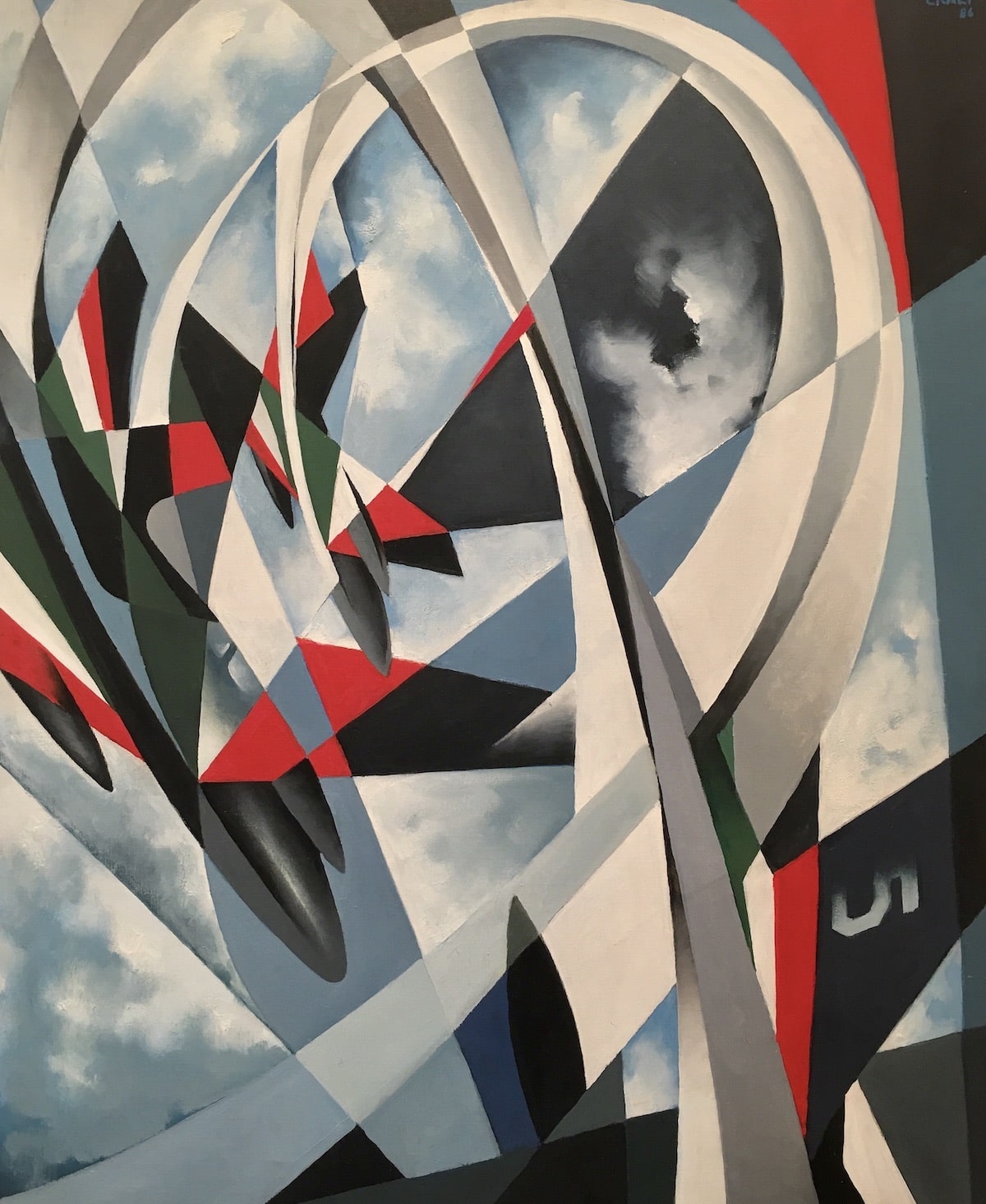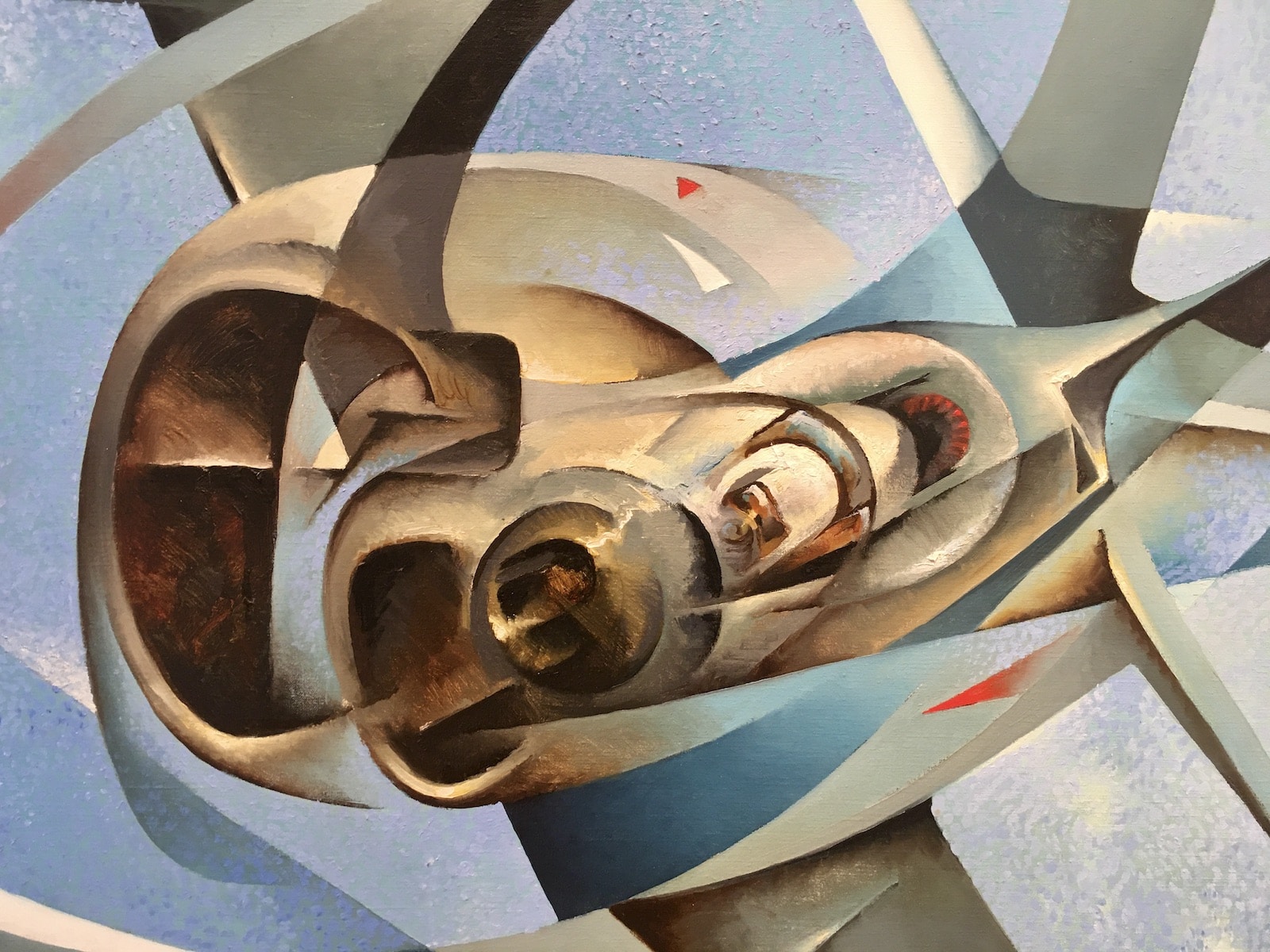Tullio Crali A Futurist Life is the latest exhibition at the delightful Estorick Collection. Located in a beautifully restored 17th century townhouse in Islington it is always a delight to wander the permanent collection here, an outstanding collection of modernist Italian art.
The Estorick Colection’s main fame lies in a particularly good selection of Futurist art, and this exhibition of work from Tullio Crali has picked out one of its lesser known proponents.
Names like Filippo Tommaso Marinetti, Umberto Boccioni, Carlo Carrà, Gino Severini, Giacomo Balla, and Luigi Russolo are probably most widely known, but this exhibition proposes that Crali was actually one of their key members.
For Crali Futurism was not just a school of painting, but an attitude to life itself. Reflecting the movement’s enthusiasm for the modern world, his imagery embraced technology and the machine as important sources of creative inspiration.
However, with its particular focus on “the immense visual and sensory drama of flight”, Crali’s work is most closely associated with the genre of ‘aeropainting’, which dominated Futurist research during the 1930s.
We discover at Tullio Crali A Futurist Life that, amazingly Crali discovered Futurism when he was just fifteen years old. Immediately converted he officially joined the movement and quickly developed his own distinctive interpretation of its artistic principles.
Despite incorporating recognisable details such as clouds, wings and propellers, Crali’s thrilling imagery challenged conventional notions of realism by means of its dynamic perspectives, simultaneous viewpoints and powerful combination of both figurative and abstract elements.
As a result of his talent, versatility and unshakable commitment to Futurist ideas, Crali swiftly became one of the movement’s key representatives. Tullio Crali: A Futurist Life features many rarely seen works from the 1920s right through to the 1980s, and covers every phase of the artist’s remarkable career.
Right from the start of Tullio Crali A Futurist Life, arranged chronologically, his works are immediately original and coherent. The Forces of the Bend (1930), despite being one of his first, is one of the exhibition’s best, and powerfully shows a speeding car in sweeps of red black and white.
Soon following are other fine works, Broken Engine (1931), where Crali creates a swirling aerial drama in a palette of blue, gold, white and Tricolour Wings (1932) with multiple overlaid images of a plane are set amongst both patchwork fields and blue skies.
Unlike many futurists, who were perhaps disillusioned by the disaster of the Second World War, Crali remained faithful to the Futurist cause throughout his life. He was however not heavily enbroiled in the fascist cause and was deeply cynical of the military. When the movement wound down in 1950 he declared ‘Marinetti may have gone but the futurists remain!’.
We also at Tullio Crali A Futurist Life see Crali’s experiments with some different styles and ‘poetic games with matter’. These included, still lives of fruit, the theory of ‘Sassinetti’, a fusion of the Italian for stones and synthesis, where he, not particularly successfully, arranged natural objects on canvas; experimental works of visual poetry and mixed-media reliefs; andexamples of ‘cosmic’ imagery dating from the 1960s, inspired by advances in space exploration.
Painting in a futurist style until close to his death in 2000 it is this style of work which provides his strongest legacy, a significant contributor to one of the most important avant-garde movements of the 20th century.
Don’t forget to visit the permanent exhibition too, and finally of course to mull over an ever-enjoyable visit with a cappuccino and pasta in the peaceful garden of the Estorick Cafe.
Tullio Crali A Futurist Life runs at The Estorick Collection until 13 September 2020
For more information visit The Estorick Collection
For our curated recommendations of Art, Culture and Travel books visit the CELLOPHANELAND* bookstore




